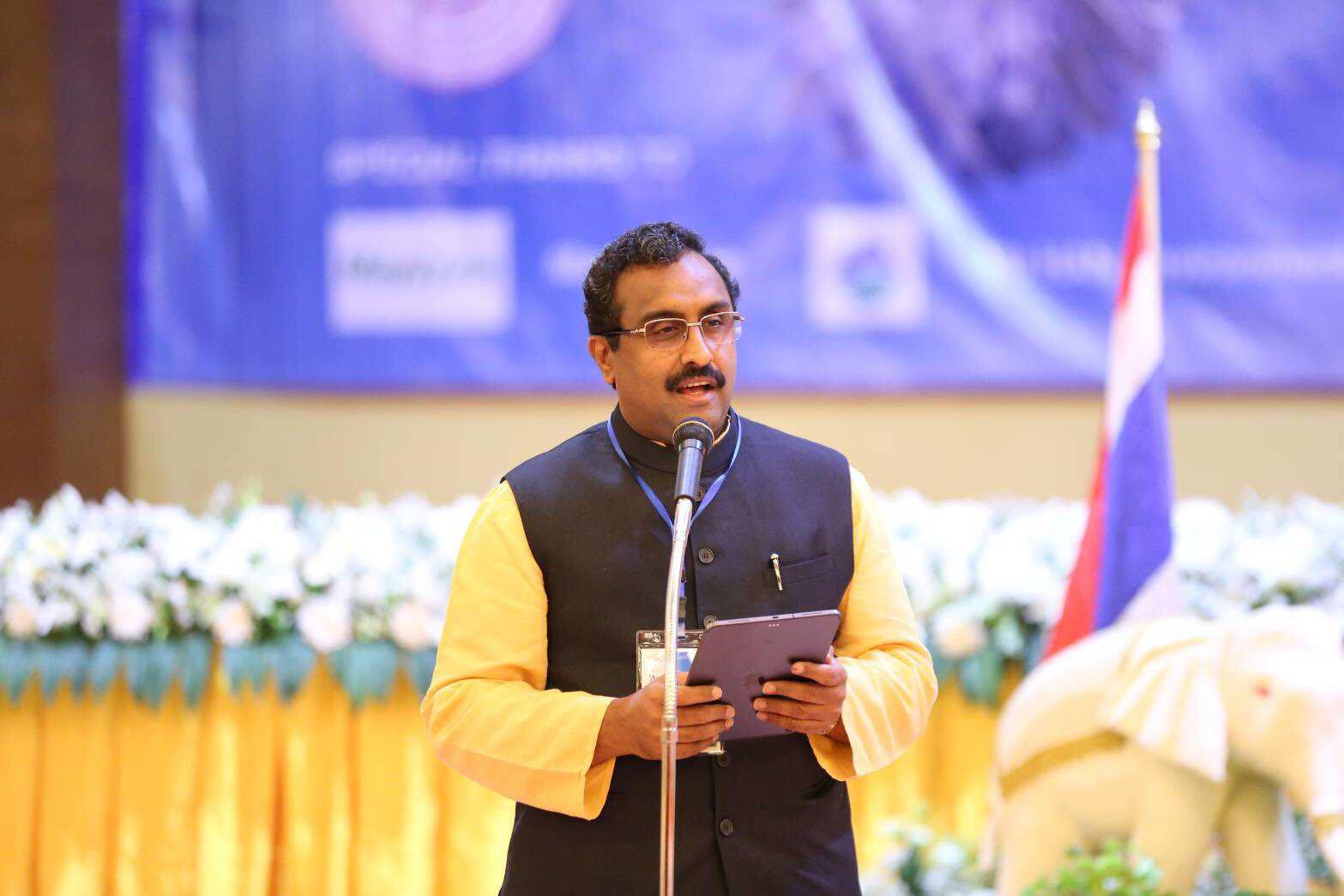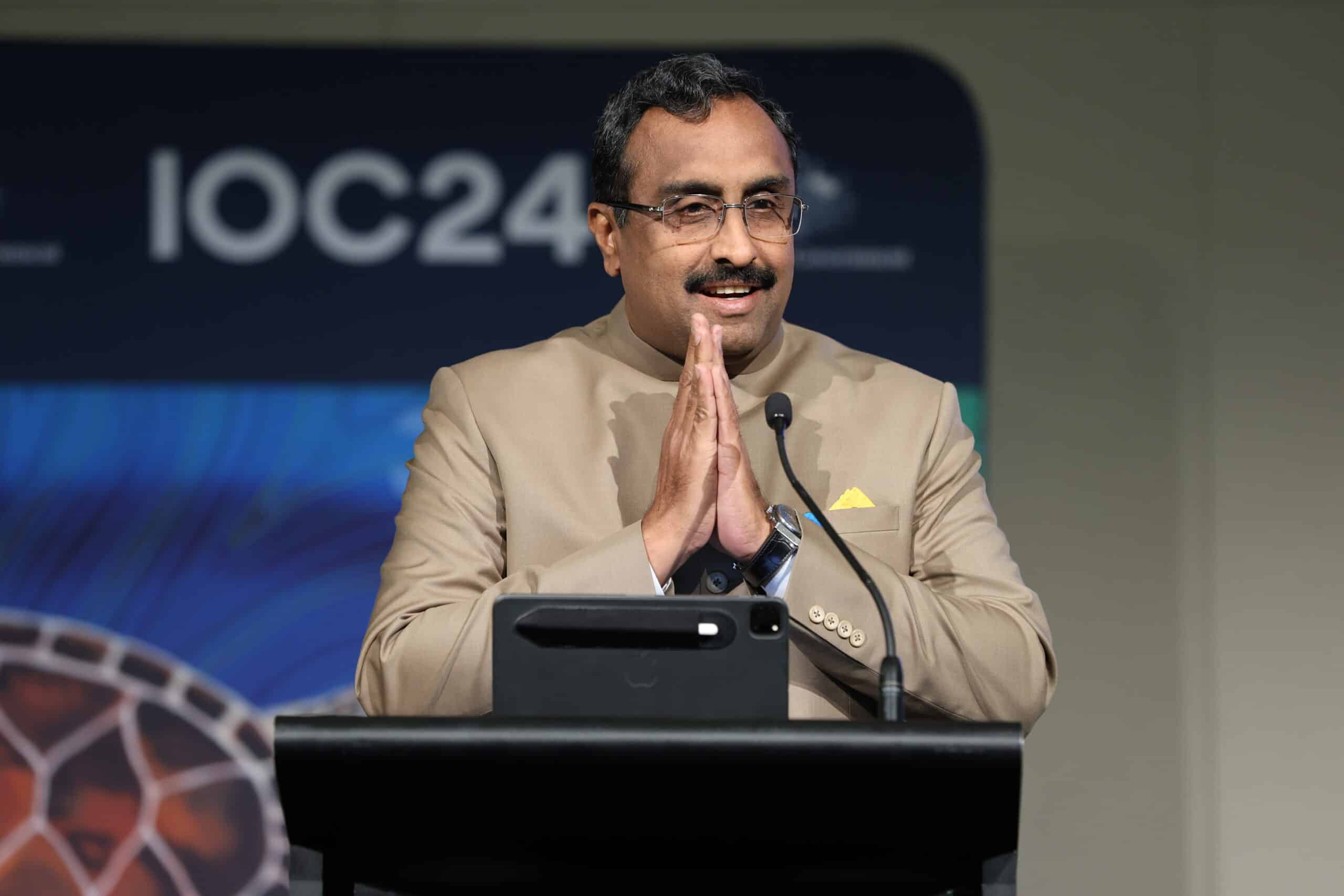
|
Getting your Trinity Audio player ready...
|
Text of address delivered at the World Peace Conference at Mahachulalongkorn Rajavidyalaya (University) in Ayutthaya, Thailand on June 16, 2019
Om!
Sangachadhwam Samvadadhwam – Samvo Manaamsi Jaanataam
Devaabhaagam Yathaapurve – Sanjaanaanaa Upaasate
May we move in harmony; speak in one voice; Let our minds be in agreement;
Samaano Mantrah Samitih Samaani – Samaanam Manas Sahachittameshaam
Samaanam mantramabhimantramevah – Samaanena vo Havishaa Juhoomi
May our purpose be the same; may we all be of the same mind;
Samaaneeva Aakootihi Samaanaa hridayaanivah
Samaanamastu Vo Mano Yathavassusahaasati
May our intentions and aspirations be alike;
This famous Rigvedic hymn is the daily prayer of millions of Hindus across the world. Unity of mind, mission, action and aspiration is what this prayer calls for. Mankind, devastated by violence and conflict all around today, needs that commonness in thoughts and in actions desperately, so that we can achieve lasting peace.
Man is at the centre of all conflict. Peace eludes mankind because man has built an empire based on tragedy and conflict. Every institution that man has built over millennia – religion or politics or social structures or economic order – is but one more step in the direction of more conflict, more sorrow and more suffering. Mankind came to believe as though tragedy was the path to progress.
The story of conflict is millennia old. Athens and Sparta, the Ancient Greek city states fought pitched battles and sacrificed tens of thousands of their citizens in Peloponnesian war in the 4th century BC for control over territories and resources. It was politics causing conflict. Latin Church had sanctioned Crusades against the Muslim rulers in the Mediterranean lands for close to 5 centuries from 10th century onwards. Thousands perished. Those were religious wars.
Within Christianity revolt brew against Roman Catholic Church in the Christian lands of Europe in the middle of the second millennium. Catholics and Protestants waged a bloody 30-year war in the 16th century over intra-religious issues. Estimates of deaths run into many millions. Finally peace returned with the famous Treaty of Westphalia that was signed in 1648. That had led to reformation and enlightenment periods in the European history. Reason replaced blind belief; age of reason, they called it. But even that couldn’t bring lasting peace to the world.
This time it was racial and ideological supremacists who had caused enormous conflicts in the 20th century. The result was two world wars and a long period of Cold War with chilling consequences. Post 2nd world war international institutions like the United Nations came into being, paving the way for a world free of conflict. End of the Cold War, after the collapse of the Soviet Union in early 90s, had led to several scholars predicting that the age of conflict had permanently ended. ‘End of History’ proclaimed Francis Fukuyama, hoping that the world would now be a flat place with equality, dignity and peace.
But that was not to be the case. Those noble ideals continue to elude us. Terrorism, new types of warfare from nuclear to cyber, ecological challenges and radical socio-religious ideologies continue to shatter peace and spawn violence and conflict in all parts of the world.
How can the world overcome this conflict and strive for peace? Problem is that we all look for roots of this conflict in religious theologies and political ideologies, while the real culprit is man himself.
Conflict germinates in the minds of men. It is those minds that needs to be taken care of if we want real peace in the world. If man is not told to achieve peace within, the conflict outside can’t be addressed successfully. The great spiritual leadership of the world needs to come forward to teach mankind about peace within and peace without.
Today man believes in the dictum of ‘struggle for existence’. We need to tell him that the universe is pervaded by the divine; it is sacred and hence there ought not to be any place for struggle. Yet the struggle that we experience around us everyday is a product of certain illusion – Maya as described by both Hinduism and Buddhism; not the natural state of the mankind.
Today man believes in the dictum of ‘survival of the fittest’. Can we tell him that the assertion of ‘those who earn shall eat’ is erroneous and we need to imbibe the principle of ‘those who were born shall eat, and those who earn shall feed’!
Today, man is waging a war on the nature. ‘Exploitation of nature’ has become a way of life with the mankind. Can we teach him to ‘milk’ the nature, like how a child draws milk from the mother, not exploit? Can we teach him the Rigvedic concept of ‘Maata Prithvih- Putroham Prithivyah’ – ‘earth is my mother and I am the son of thee’ from the Prithvi Suktam!
Lastly, today, man is obsessed with the idea of ‘fundamental rights’. There is nothing wrong with the idea of fundamental human rights. But we need to make man understand the importance of fundamental duties also. As Gandhiji used to put it, if I perform my duty well, I am guaranteeing the rights of others, and vice versa.
The only way for lasting peace is to instil these principles in the minds of men, especially the belief in the Vedic concept of ‘Sarvam Khalvidam Brahma’ – ‘whatever is there is god’; the omnipresence of divinity. Sacredness of everything that is visible and invisible in the creation can only make man strive for peace, for, when everything is divine, where is any place for struggle?
India has developed the science of Yoga to train men in reaching a state of consciousness where the physical and mental being becomes completely subsumed in the universal being. That is the only way for peace.
Om Shantih Shantih Shantih



